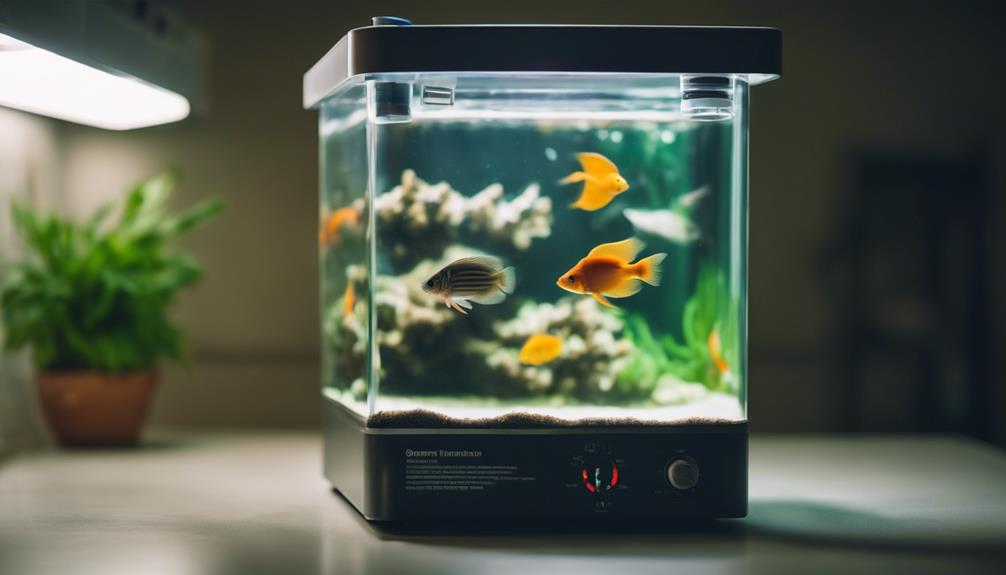When setting up fish health quarantine procedures, focus on disease prevention through vigilance. Use a clean tank, equip with necessities and monitor fish closely. Acclimate new fish slowly to reduce stress. Watch for signs of illness and act promptly for timely care. Ensure optimal water quality and adapt the diet to meet needs. Follow medication protocols closely for effective treatment. Manage stress through enriching activities and gradual integration. Remember, attention to detail in quarantine is key to fish health. Further insights on quarantine practices await to maintain your fish's well-being.
Key Takeaways
- Clean tank and equipment with diluted bleach for hygiene.
- Use drip acclimation method to match water parameters.
- Monitor fish closely for signs of illness and behavior changes.
- Maintain optimal water quality with frequent testing.
- Adhere to a 2-4 week quarantine period for new fish.
Importance of Quarantine Procedures

Quarantine procedures are crucial for maintaining the health and integrity of fish populations in aquatic environments. Disease prevention is at the core of these measures. By isolating new fish arrivals, you can prevent the introduction of pathogens into your main tank. Biosecurity measures, such as regular health checks and observation, help in early detection of any signs of illness.
During quarantine, closely monitoring the behavior and health of the fish is essential. Look out for symptoms like abnormal swimming patterns, loss of appetite, or any physical abnormalities. This vigilance allows you to promptly address any health issues that may arise.
Additionally, maintaining optimal water quality in the quarantine tank is paramount. Regular water testing and necessary adjustments ensure a stable environment for the quarantined fish.
Setting Up Quarantine Tank
When preparing a quarantine tank for new fish arrivals, ensure the setup meets the specific requirements for maintaining fish health and safety. Begin by thoroughly cleaning the tank and all equipment with a diluted bleach solution, ensuring no residue is left behind. Rinse everything well to remove any traces of bleach. Check that the tank is the appropriate size for the fish and that it has a tight-fitting lid to prevent escape. Equip the tank with a heater to maintain stable water temperature, a filter for water circulation and cleanliness, and a reliable thermometer to monitor temperature fluctuations accurately.
